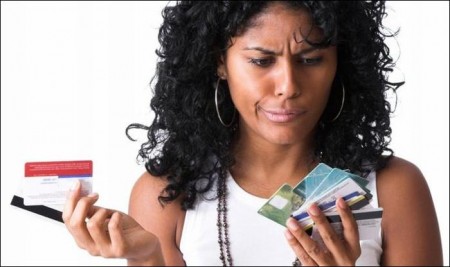Sign up for automatic subscription billing online, and you might keep getting charged after canceling.
Even if you use the utmost caution, you can still be a victim of credit card fraud. Credit card companies and banks are more and more often putting the onus of catching phony or incorrect credit card charges on the consumer.
The most important thing is to check your billing statement, of course. And there are organizations that offer tips on how to keep your cards safe as well. Here, we take a look at 10 of the riskiest places you might use your card, and what you can do to avoid the dangers.
Non-Bank Owned ATMs
Encryption at these ATMs is often not as good as at bank ATMs, meaning some locations are just not as safe. These ATMs also are more likely to be hacked. And in some cases, people have put up devices that look like ATMs but don’t give out cash. Instead, they are just card-skimming devices aimed at stealing your credit card or debit card information.
Wi-Fi Hotspots and Public Computers
If you’re going to be making online transactions over an unsecured wireless connection like in cafes, parks and other hot spots, data can be compromised or seen while in transit, even if you’re on a secure page while you’re checking out. The same goes for public computers like in libraries. It’s not advisable to ever transmit personal data when you’re in a public connection environment, especially on non-secure wireless.
Recurring Bills / Subscriptions
Instead of using automatic billing, ask to be billed on a one-time bill by bill basis instead. When you use your credit card for purchases that involve weekly, monthly or annual billings, you can encounter the headache of over-billings, continued billing once a subscription has ended, etc. Some less-than honest merchants will use automatic billing in hopes you’ll forget and won’t check your credit card statement.
Purchases on Smart Phones
Purchases on smart phones can also be less than secure. If your smart phone connects to a public wi-fi signal, you’re going to be much less secure. Someone else can potentially see the transaction, or malware can be placed on your device that can potentially transmit your personal information.
Unsolicited E-Mail Offers
Unless you’ve signed up for solicitations from particular companies, be wary. Check the URL in the e-mail. If it looks suspect, don’t click on it. You can always contact the company through their official website to confirm the legitimacy of the offer.
Strange and Foreign Domain Extensions
If you’re going to be shopping online, it’s best to stay with sites that use a .com extension. And be sure they have a secure checkout. With extensions for countries outside the U.S. — like .ru for Russia — use caution and make sure the company you’re purchasing from is actually located in the country depicted in the domain extension.
Suspect Swipe Terminals
If there’s something that looks suspicious at an ATM or a gas pump credit card swipe terminal — like a separate stand-alone device for you to swipe your card through — or something looks like it’s been added onto the terminal, think twice about using it. More often than not, those types of add-ons are put there by criminals so they can steal your credit card information.
Flea Markets
Flea market merchants are often transient and can be difficult to locate if there is a problem with charges. It’s especially true for vendors who don’t have online credit card terminals and instead make carbon copies of your credit card.
That doesn’t mean those vendors are necessarily fraudulent, but it makes the transaction less secure. The credit card company might have trouble doing a charge back. If you’re going to the flea market, take cash. It’s also easier to negotiate that way.
Small Shops / Cafes in Foreign Countries
These smaller merchants have a significantly higher percentage of credit card fraud as reported by large banks and credit card companies. Many of these transactions end up being written off by the banks because the merchants simply can’t be located. There’s just a higher chance of fraud when you get outside of the mainstream, so when in doubt, use cash.
Non-Secure Online Checkout
General common sense. Any safe, reputable e-commerce site is going to have a secure checkout page, like the one shown at left. If that doesn’t appear, it should be a red flag. You can almost be sure it’s not legitimate, and even if it is, you’re opening yourself to that transaction being seen by others.
Views: 293





